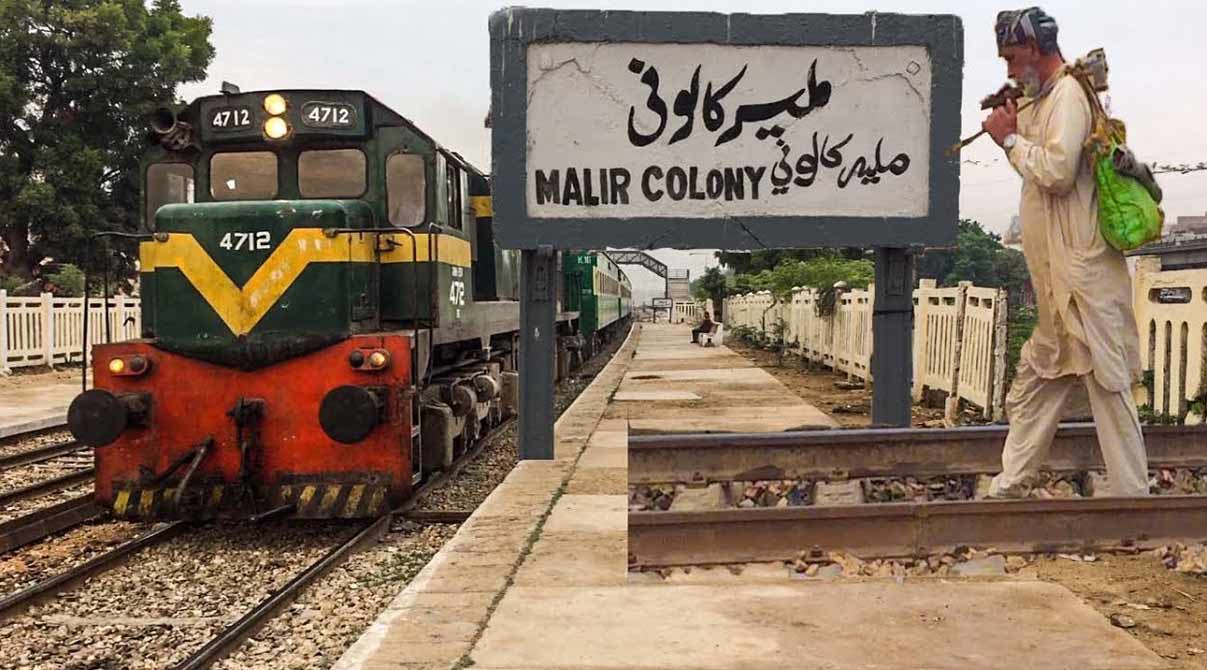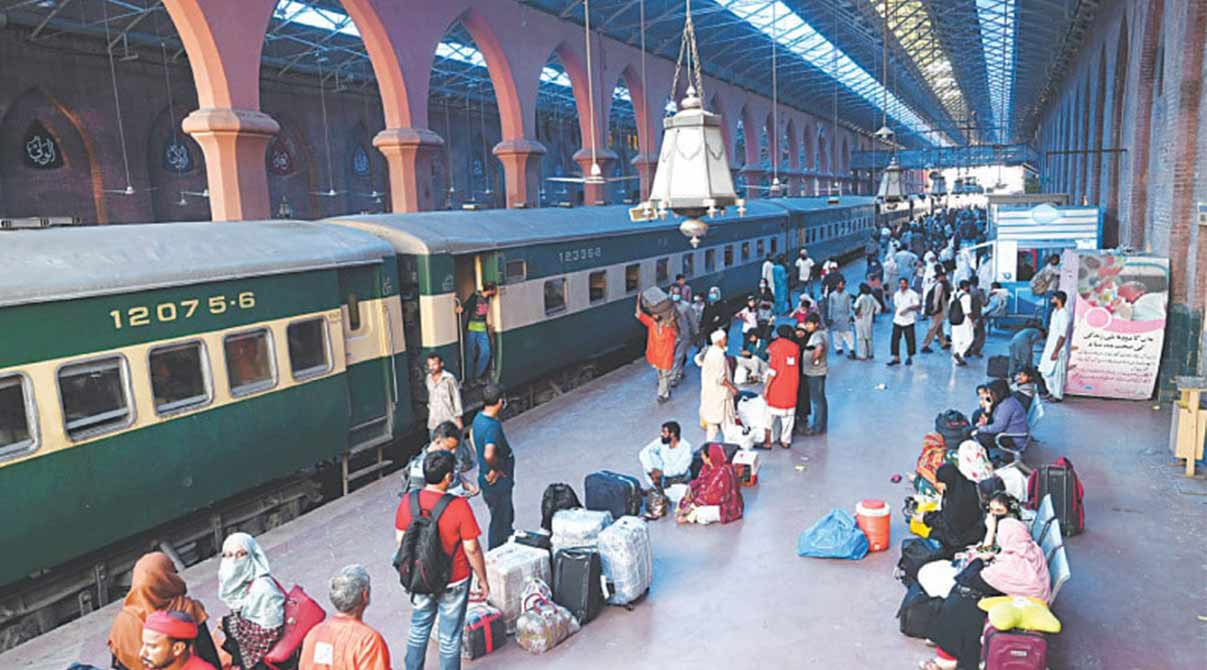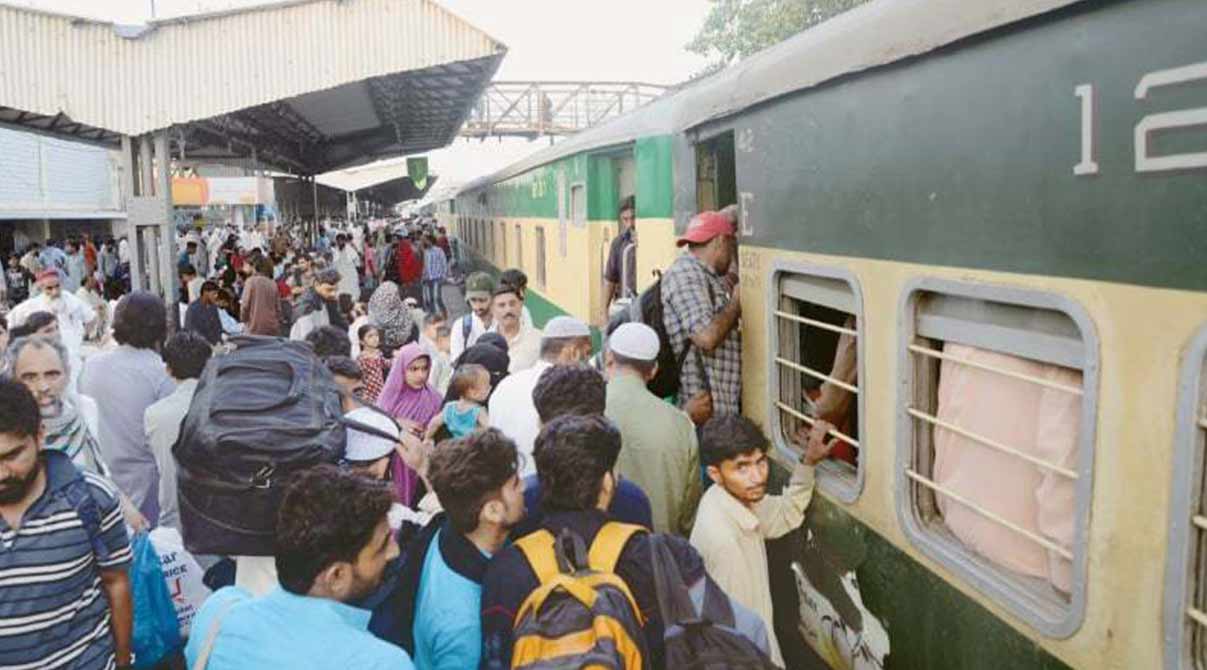Pakistan Railways is the country’s sole state-owned railroad. Its main office is in Lahore, where it was established in 1861. An active participant in the International Union of Railways is Pakistan Railways. Pakistan Railways transported 70 million passengers during the 2018-19 fiscal year. Pakistani government’s Ministry of Railways (MoR) administers this railway. Planning, managing, and providing passenger train service as well as overseeing railroad firms and related sectors are among its main responsibilities.
The Main-Line (ML)-1 project of the China-Pakistan Economic Corridor (CPEC) is expected to shorten the current 18.5-hour transit duration between Lahore and Karachi to nine hours. Read more about the benefits of ML-1 in this article.
Major Divisions and Tracks of Pakistan Railways
Eight geographic operational divisions make up the railway: Karachi, Lahore, Multan, Peshawar, Quetta, Rawalpindi, Sukkur, and Gwadar. There are 190 operational diesel-electric locomotives at Pakistan Railways. The Pakistan Locomotive Factory maintains the fleet, which has an average lifespan of 25 years.
Twenty branch lines and five major lines make up the Pakistan Railways network. The main east-west line is the Rohri-Chaman line, and the main north-south line is the Karachi-Peshawar line.
The five Main lines of Pakistan Railways are
- Main Line 1 (ML-1) Karachi–Peshawar Line
- Main Line 2 (ML-2) Kotri–Attock Line
- Main Line 3 (ML-3) Rohri–Chaman Line
- Main Line 4 (ML-4) Quetta–Taftan Line
- Main Line 5 (ML-5) Taxila–Khunjerab Line
Travel Between Lahore and Karachi
Karachi to Lahore travel is difficult, time-consuming, and tiresome. The distance between the two cities is 1,211.6 km. Travel by car can take 16-18 hours, and the journey by bus can take 18-21 hours. Although air travel can help you reach your destination in 1 hour 45 minutes to 2 hours. It is much more expensive with the price of only one-way tickets ranging between 14k to 17k. Most of the people in the country simply cannot afford it. This leaves them with the option of the journey via train, the most suitable, affordable, and comfortable option for them.
Traveling such a long distance by road on a car or bus can make anyone extremely tired. Due to this, people would often need to stop at several roadside restaurants. Or they might stay there for a night or several hours to relax and get back on their journey. Fortunately, after the construction of the ML-1 railway track, they don’t need to do it. As it takes them much less time to reach Karachi from Lahore or vice versa.
Related: TransKarachi: LUMS Sign MOU to Promote Gender Equity in Public Transport
What is The ML-1 Railway Track?
One of Pakistan’s four main railway lines is the Karachi-Peshawar Railway Line. It’s common name is the Main Line 1 or ML-1, and Pakistan Railways runs, maintains, and manages this track too. The line starts at Kiamari or Karachi City Station and terminates at Peshawar Cantonment Station.
This railway route is 1,687 kilometers long in all. From Kiamari to Peshawar Cantonment, this line has 184 railway stations. Undoubtedly, the route acts as the nation’s primary passenger and freight route. 75% of the nation’s cargo and passenger traffic uses this line.
As part of the China Pakistan Economic Corridor, the line is presently undergoing a six-year repair and rehabilitation project of Rs. 1286.68 billion (US$5.6 billion), during which the authorities anticipate its average train speed to increase to 160 km/h.
The 10.88 trillion Pakistani rupee (PKR) project has so far been the largest development project Pakistan has ever launched. The Executive Committee for National Economic Council (ECNEC) approved it on August 5. According to plans, authorities will install fences along the entire railroad on both sides to prevent accidents by forbidding haphazard crossings.
History of ML-1 Railway Track
The British Empire 1855 was the birthplace of railway travel in Pakistan. Work on the Karachi terminal of the railway line, between Karachi and Kotri, started in April 1858. The Railway authorities granted public access to the station on May 13, 1861. This was the first railroad line between Karachi and Kotri, a distance of 108 miles, to be open for public traffic.
The Scinde Railway’s construction completed in 1861 and was a 108 miles long railway line between Karachi and Kotri. Afterwards, the Railway authorities constructed and inaugurated the Punjab Railway in late 1865 as a 1,676 mm (5 ft 6 in) broad gauge railway line between Multan and Amritsar. Following the completion of the line in 1878, the Indus Steam Flotilla began docking in Kotri (instead of Karachi) towards Multan.
Thus the Scinde Railway, Indus Steam Flotilla, and Punjab Railways together greatly reduced the travel time between Sindh and Punjab. What normally took 40 days to travel between Karachi and Lahore now took 48 hours to transport passengers and cargo.
Related: KP Govt Announces Free Transport for Female Students
North Western State Railway
The Scinde Railway, Indus Steam Flotilla, Punjab Northern State Railway, and Delhi Railway firms united to establish the Scinde, Punjab & Delhi Railway in 1870. To close the rail gap between Kotri and Multan, the Indus Valley State Railway was established in 1871. Between Lahore and Peshawar, the Punjab Northern State Railway was built in 1876. The Attock Bridge over the Indus River and the Empress Bridge were opened in 1883 and 1878, respectively. Between Rohri and Sukkur, the Lansdowne Bridge opened in 1889, followed by the Kotri Bridge in 1893. Finally, all the companies united in 1885 to become the North Western State Railway.
Pakistan Western Railway
The majority of the North Western State Railway’s infrastructure was present in Pakistan at the time of that country’s independence in 1947. And it got the new name Pakistan Western Railway. The Pakistan Eastern Railway got a new name in East Bengal for the section of the Assam Bengal Railway that was in Pakistani territory. Pakistan adopted the North Western State Railway’s 8,122 km (5,047 mi), of which 7,36 km were narrow gauge (762 mm) and 736 km were meter gauge (1,676 mm).
Why is The ML-1 Railway Track Important? – Benefits of The ML-1
The most important project to upgrade the country’s main railway lines is ML-I, with the goal of revitalizing the aging rail network and returning it to its former grandeur. Experts claim that the ML-1 is a “game changer”, and that once its construction completes, Peshawar and Karachi will develop into commercial hubs and major sources of employment for a large number of individuals.
According to estimates, the project will offer 24,000 people employment chances. Through the creation of land route connections, the initiative, which will see level crossings transformed into underpasses, flyovers, and bridges would also aid the landlocked Central Asian nations.
The ML-1 project also entails the construction of a dry port, which is anticipated to be finished prior to the renovation of the Peshawar-Karachi railroad line, in the Havelian tehsil of the Haripur district of Khyber Pakhtunkhwa. This dry port will support trade and the secure handling and storage of cargo containers.
Additionally, the 900 km south of Lalamusa in the direction of Karachi located ML-1 railway track will be rebuilt to allow for the passage of vehicles with a 25 tonne axle load capacity. Computerized signal systems will be installed along the full span of the ML-1 railway track. A fence will also be installed along the railway track that touches the urban areas to deter vehicles and pedestrians from using the lines illegally.
It will allow trains to move at 160 km/h while they previously could only do so at 60 km/h. The annual revenue of Pakistan Railways is also anticipated to rise by about $480 million.
Related: Pakistan Railways Starts First-ever Tourist Train in Balochistan
How Will The ML-1 Railway Track Improve Train Travel Between Karachi and Lahore?
The Main-Line (ML)-1 project of the China Pakistan Economic Corridor (CPEC) is expected to shorten the current 18.5-hour transit duration among Lahore and Karachi to nine hours by developing and upgrading the 1,872-kilometer-long train route connecting Peshawar and Karachi. Since the upgraded track will enable trains to move at a speed of 165 km/h, the ML-1 project construction may further assist cut the trip duration from Rawalpindi to Lahore, Multan to Lahore, to two and a half hours and two hours, respectively. The initiative will also increase the track’s daily capacity from 37 trains to 171, which is higher than the current capacity.
Conclusion
In conclusion, the ML-1 Railway Track project is a much-needed infrastructure investment that will have many positive impacts on Pakistan. Not only will it reduce journey times between Karachi and Lahore, but it will also create jobs, improve the efficiency of trade and transportation between the two cities, and boost the economy. The project is expected to be completed by 2025 and will greatly improve Pakistan’s transportation network.



